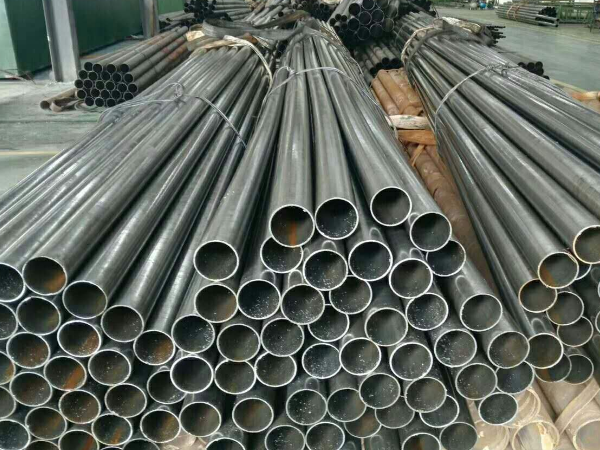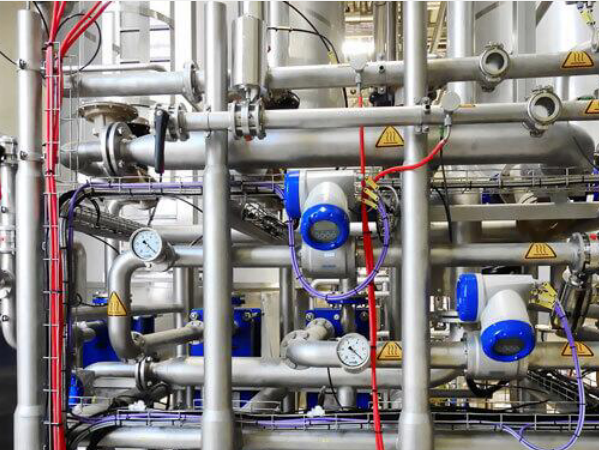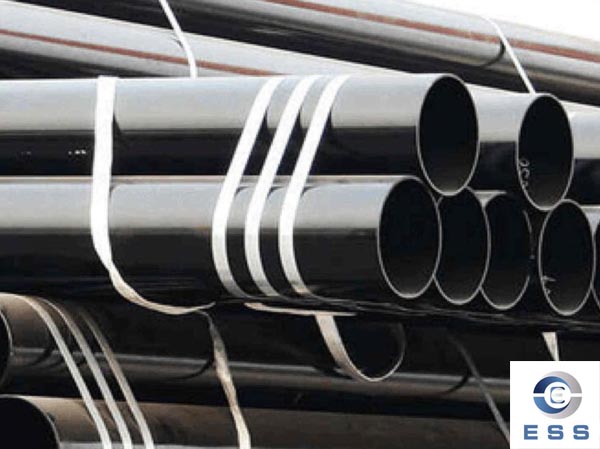¿Qué es un tubo de acero dulce?
El tubo de acero dulce está hecho de acero al carbono con un contenido de carbono inferior al 0,25 %. El acero dulce es un tipo de acero al carbono con un contenido de carbono muy bajo, de aproximadamente entre el 0,16 % y el 0,29 % en peso. Este acero es económico y el más utilizado. Es maleable, pero tiene baja resistencia a la tracción. El acero con bajo contenido de carbono no se puede endurecer mediante tratamiento térmico.
El acero dulce es el tipo más suave de acero al carbono y tiene un contenido de carbono relativamente bajo. Los aceros dulces también pueden contener otros elementos como manganeso, silicio y trazas de fósforo. Estos elementos adicionales protegen la integridad de la estructura metálica del hierro al evitar dislocaciones dentro de los cristales de hierro. El carbono actúa como agente endurecedor y el porcentaje de carbono añadido es directamente proporcional a la resistencia del acero; la resistencia del acero generalmente aumenta con el porcentaje de carbono añadido. El acero dulce tiene un contenido de carbono muy bajo en comparación con otros aceros al carbono. El acero dulce presenta alta ductilidad y ductibilidad, mientras que otros tipos de acero al carbono presentan baja ductilidad. El acero dulce no se puede endurecer mediante tratamiento térmico, pero otros tipos de acero al carbono sí. El acero dulce presenta menor resistencia y dureza que otros tipos de acero al carbono. Esto se suele expresar mediante la rugosidad superficial Ra del acero.
La rugosidad superficial de la tubería se manifiesta principalmente en los siguientes aspectos: La rugosidad superficial de las piezas de desgaste. Cuanto más rugosa sea la superficie, menor será el área de contacto efectiva con el cojinete, mayor será la presión y mayor será el desgaste.
Los tubos sin costura de acero con bajo contenido de carbono presentan las siguientes características:
1. Los tubos sin costura de acero con bajo contenido de carbono son aceros al carbono con un contenido de carbono inferior al 0,25 %. Debido a su baja resistencia, dureza y blandura, también se denominan aceros con bajo contenido de carbono.
2. La estructura recocida de los tubos sin costura de acero con bajo contenido de carbono es ferrita y una pequeña cantidad de perlita, con baja resistencia y dureza, pero buena plasticidad y tenacidad.
3. Los tubos sin costura de acero con bajo contenido de carbono tienen un buen rendimiento de conformado en frío y pueden conformarse en frío mediante engarce, doblado, estampado y otros métodos.
4. Los tubos sin costura de acero con bajo contenido de carbono tienen buena soldabilidad. Se adaptan fácilmente a diversos procesos, como forjado, soldadura y corte.
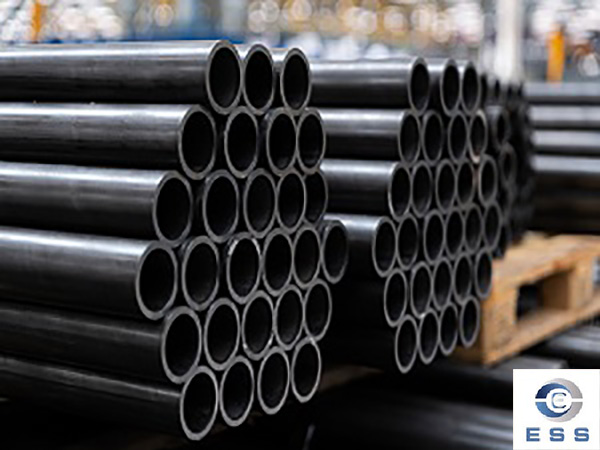
Los tubos de acero al carbono se fabrican a partir de lingotes de acero o acero redondo sólido mediante perforación en tubos capilares, que posteriormente se fabrican mediante laminación en caliente, laminación en frío o estirado en frío.
La materia prima para los tubos de acero al carbono es la palanquilla de tubo redondo. El embrión del tubo redondo se corta con una máquina cortadora para obtener palanquillas de aproximadamente 1 metro de longitud y se transporta al horno mediante una cinta transportadora. La palanquilla se introduce en el horno para calentarla a una temperatura aproximada de 1200 grados Celsius. El combustible es hidrógeno o acetileno. El control de la temperatura en el horno es fundamental. Una vez que el tubo redondo sale del horno, se perfora con una perforadora a presión. Generalmente, la perforadora más común es la de rodillos cónicos. Este tipo de perforadora ofrece una alta eficiencia de producción, buena calidad del producto, gran expansión del diámetro de perforación y admite diversos tipos de acero.
Tras la perforación, la palanquilla del tubo redondo se lamina transversalmente, se lamina continuamente o se extruye mediante tres rodillos. Tras la extrusión, el tubo se desmonta para su dimensionado. El dimensionado se realiza mediante perforaciones cónicas rotatorias de alta velocidad en la pieza bruta para formar un tubo. El diámetro interior del tubo de acero se determina por la longitud del diámetro exterior de la broca de la máquina dimensionadora. Una vez dimensionado, el tubo de acero entra en la torre de enfriamiento y se enfría mediante pulverización de agua. Una vez enfriado, se endereza. Tras el enderezamiento, se envía al detector de defectos metálicos (o prueba hidráulica) mediante la cinta transportadora para la detección de defectos internos. Si existen grietas, burbujas u otros problemas en el interior del tubo de acero, se detectarán. Tras la inspección de calidad de los tubos de acero, se requiere una rigurosa selección manual. Tras la inspección de calidad, se pinta el número de serie, las especificaciones, el número de lote de producción, etc., y se iza al almacén mediante grúa.
El tubo de carbono sin costura es el material más utilizado para tuberías de proceso. Ofrece amplia disponibilidad, alta resistencia y diversas posibilidades de conexión, como conexiones roscadas, soldadura a tope y soldadura por encastre. Las tuberías de acero deben seleccionarse en función de la resistencia y durabilidad requeridas para la aplicación, así como de la ductilidad y trabajabilidad necesarias para unirlas y formar carretes. Las tuberías deben soportar la presión, la temperatura y las condiciones corrosivas de la aplicación. Se utilizan para servicios de líquidos, gases y vapor, tanto superficiales como subterráneos.
¿Cuál es la diferencia entre las tuberías de acero dulce y las de acero al carbono?
1. Contenido de carbono diferente
Contenido de carbono: el acero con bajo contenido de carbono generalmente es inferior al 0,25 %; el acero con medio contenido de carbono, generalmente entre el 0,25 % y el 0,60 %; el acero con alto contenido de carbono, generalmente superior al 0,60 %.
Además del carbono (C) y una cierta cantidad de silicio (Si) (generalmente no superior al 0,40 %) y manganeso (Mn) (generalmente no superior al 0,80 %, hasta un máximo del 1,20 %), elementos de aleación para la desoxidación, el acero no contiene otros elementos de aleación (excepto elementos residuales). Generalmente, aquellos con un contenido de carbono inferior al 0,02 % se denominan hierro forjado, aquellos con un contenido de carbono superior al 2,11 % al 4,3 % se denominan arrabio, y los que se encuentran en un punto intermedio se denominan acero.
2. Diferentes aplicaciones
El acero de bajo carbono se lamina generalmente en acero angular, acero de canal, vigas en I, tubos de acero, flejes o placas de acero, y se utiliza para fabricar diversos componentes de construcción, contenedores, cajas, hornos y maquinaria agrícola.
El acero de bajo carbono de alta calidad se lamina en placas delgadas para fabricar productos embutidos, como cabinas de automóviles y tapas de motores; también se lamina en barras para fabricar piezas mecánicas que no requieren alta resistencia.
El acero de bajo carbono generalmente no se trata térmicamente antes de su uso, y aquellos con un contenido de carbono superior al 0,15 % se carburizan o cianuran, y se utilizan para ejes, bujes, ruedas dentadas y otras piezas que requieren alta temperatura superficial y buena resistencia al desgaste.
Algunas aplicaciones comunes del acero de alto carbono incluyen: vías férreas, hormigón pretensado, cables de acero, refuerzo de neumáticos, cuchillos, hojas de sierra, engranajes, cadenas, etc.
3. Diferentes costos
El acero al carbono contiene aproximadamente entre un 0,05 % y un 1,70 % de carbono en peso. Aumentar el porcentaje de carbono en el acero le otorga mayor resistencia y se considera la forma más económica de aumentarla.
Sin embargo, el acero tiende a volverse frágil y menos dúctil debido a la adición de más carbono. Por lo tanto, es necesario añadir un equilibrio adecuado de carbono para obtener las propiedades adicionales del acero.
El contenido de carbono del acero con alto contenido de carbono oscila entre el 0,3 % y el 1,70 %, y el del acero con bajo contenido de carbono, entre el 0,05 % y el 0,15 %. El acero dulce es el tipo de acero más utilizado hoy en día debido a su precio de fabricación relativamente bajo.
4. Naturaleza diferente
El acero dulce tiene un contenido de carbono muy bajo en comparación con otros aceros al carbono. El acero dulce presenta alta ductilidad y alta dureza, mientras que otros tipos de acero al carbono presentan baja ductilidad. El acero dulce no se puede endurecer mediante tratamiento térmico, pero otros tipos de acero al carbono sí lo hacen. El acero dulce tiene menor resistencia y dureza que otros tipos de acero al carbono.
Los aceros con alto contenido de carbono se pueden tratar térmicamente mejor que los aceros dulces y, por lo tanto, son útiles en muchas aplicaciones. Otras impurezas elementales también pueden conferir al acero propiedades muy interesantes; en concreto, el azufre.
Aspectos a considerar al elegir la materia prima para tubos de acero al carbono
1. ¿Es el acero al carbono fácil de mecanizar?
Existen muchos tipos de acero al carbono. Algunos son fáciles de mecanizar, pero también hay otros que son difíciles. Los aceros dulces, como el C1010 y el C1018, tienen buena mecanización. Los aceros al carbono con mayor contenido de carbono también se pueden procesar fácilmente, pero se añade azufre a su composición química, como el C1141 y el C1144. El C1045 tiene un mayor contenido de carbono, pero no contiene otros elementos que faciliten su procesamiento, lo que lo convierte en una mala opción si se requiere procesamiento.
2. ¿Es el acero al carbono soldable?
Ciertos tipos de acero al carbono son muy soldables. Sin embargo, hay varios factores a considerar al elegir acero al carbono para soldar. En primer lugar, los aceros al carbono aptos para el mecanizado, como el C1141 y el C1144, generalmente no son soldables. Añadir azufre a estos aceros al carbono puede causar grietas de solidificación en la soldadura. Aceros dulces como el C1018 y el A36 serían mejores opciones, ya que son fáciles de soldar. También se pueden utilizar aceros con alto contenido de carbono, como el C1045, pero podrían requerir precalentamiento o tratamiento térmico posterior a la soldadura.
3. ¿Cuáles son los requisitos de resistencia del acero al carbono?
Los aceros dulces tienden a tener menor resistencia a la tracción en comparación con otros aceros al carbono. Si se requiere alta resistencia, se deben evitar estos aceros dulces. El acero al carbono con mayor contenido de carbono proporciona mayor resistencia y dureza que el acero al carbono con menor contenido de carbono. Por ejemplo, la resistencia y dureza del C1045 son mayores que las del C1008. Sin embargo, existen alternativas al acero dulce: el acero de baja aleación y alta resistencia (HSLA). El HSLA es un acero base con bajo contenido de carbono, diseñado específicamente para mantener la conformabilidad a la vez que conserva una mayor resistencia.
4. ¿El acero al carbono necesita buena conformabilidad?
La categoría de acero al carbono es tan amplia que existen muchas combinaciones diferentes de propiedades mecánicas. Si se requiere ductilidad, se deben considerar grados con menor contenido de carbono, como C1008 y C1010. Como regla general, el acero dulce es más fácil de conformar que el acero con alto contenido de carbono.
5. ¿Es fácil el tratamiento térmico del acero al carbono?
Los aceros al carbono con más del 0,30 % de contenido de carbono se pueden tratar térmicamente fácilmente, como el C1045 y el C1141. Otra opción es el acero con poco más del 0,20 % de carbono. A estos aceros al carbono se les pueden añadir trazas de otros elementos para mejorar su templabilidad, como el A36. El acero con bajo contenido de carbono, es decir, el acero con un contenido de carbono inferior al 0,20 %, no es fácil de tratar térmicamente.
6. ¿Tiene el acero al carbono buena resistencia a la corrosión?
La resistencia a la corrosión del acero al carbono no es muy buena. Está compuesto principalmente de hierro, que puede oxidarse y formar óxido. Si no se añaden suficientes elementos resistentes a la corrosión, como el cromo, a la composición química, la resistencia a la corrosión no será muy buena. Elegir acero al carbono galvanizado o electrochapado es una opción viable para prevenir la corrosión. Como alternativa, añadir aceite o pintura a la superficie del acero al carbono es una excelente manera de prevenir la oxidación del hierro.
7. Campos de aplicación
Comprender las aplicaciones comunes de los diferentes grados de acero al carbono puede ayudarle a elegir el acero al carbono adecuado para su aplicación. Estos son algunos usos típicos:
A36/44W: Piezas de automoción, levas, accesorios, depósitos de combustible, piezas forjadas, aplicaciones estructurales como edificios o puentes.
C1008, C1010, C1018: Piezas mecánicas, tirantes, aplicaciones estructurales de menor resistencia, placas de montaje y soportes.
C1045: Pernos, engranajes, cigüeñales, ejes de cilindros, piezas forjadas en matriz y aplicaciones que requieren mayor resistencia o dureza que el C1008 o el C1010.
C1141 y C1144: Espárragos, pernos, ejes, tirantes y aplicaciones similares al C1045.
Leer más: Diferencia entre tubería sin costura y tubería con costura o ¿Cuánto pueden durar las tuberías de acero dulce?









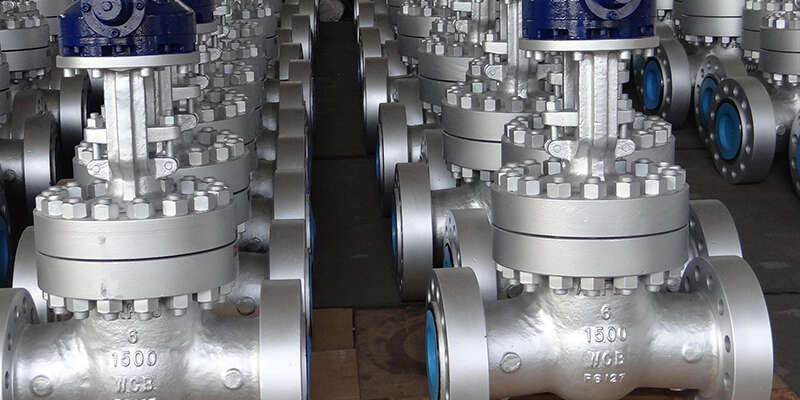
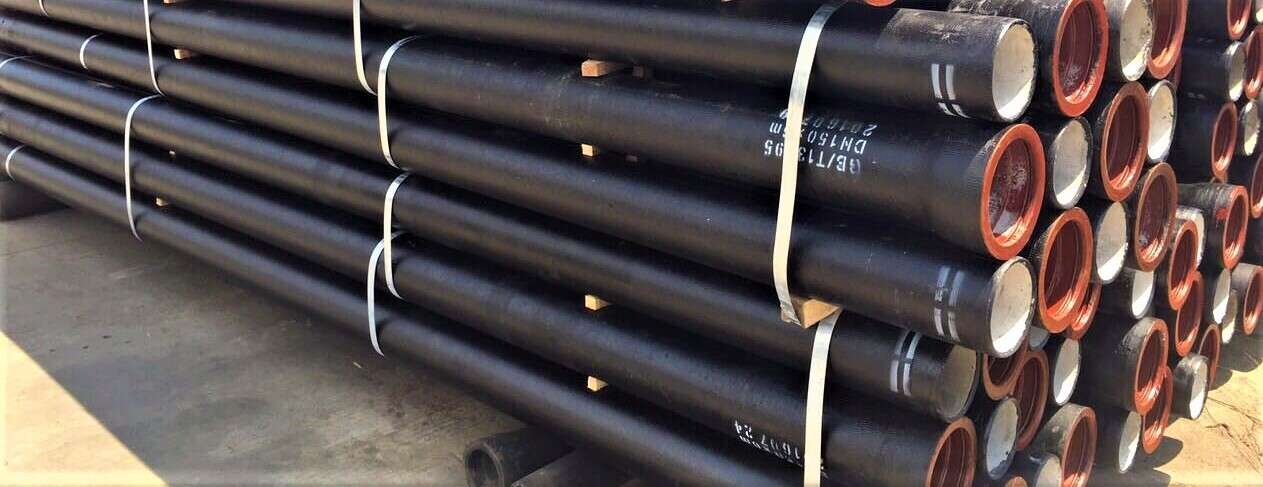


 Eastern Steel Manufacturing Co., Ltd no solo mejora la producción de productos y los servicios de venta, sino que también brinda servicios adicionales de valor agregado. Siempre que lo necesite, podemos completar sus necesidades específicas juntos.
Eastern Steel Manufacturing Co., Ltd no solo mejora la producción de productos y los servicios de venta, sino que también brinda servicios adicionales de valor agregado. Siempre que lo necesite, podemos completar sus necesidades específicas juntos.







